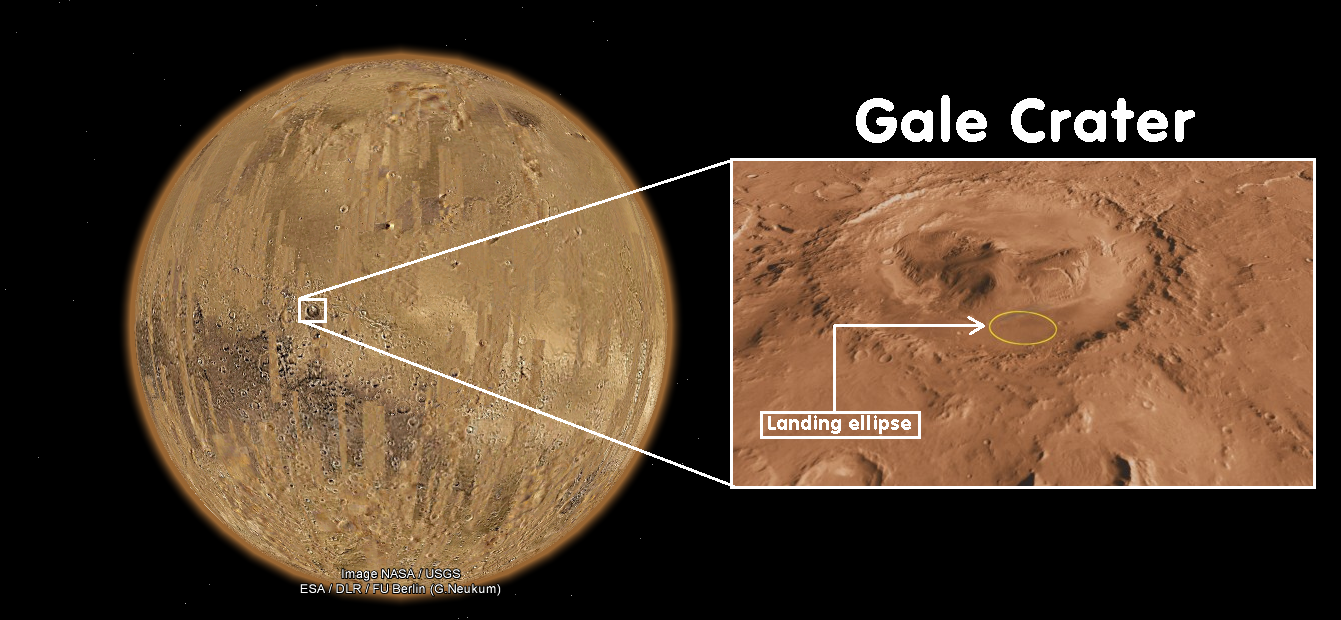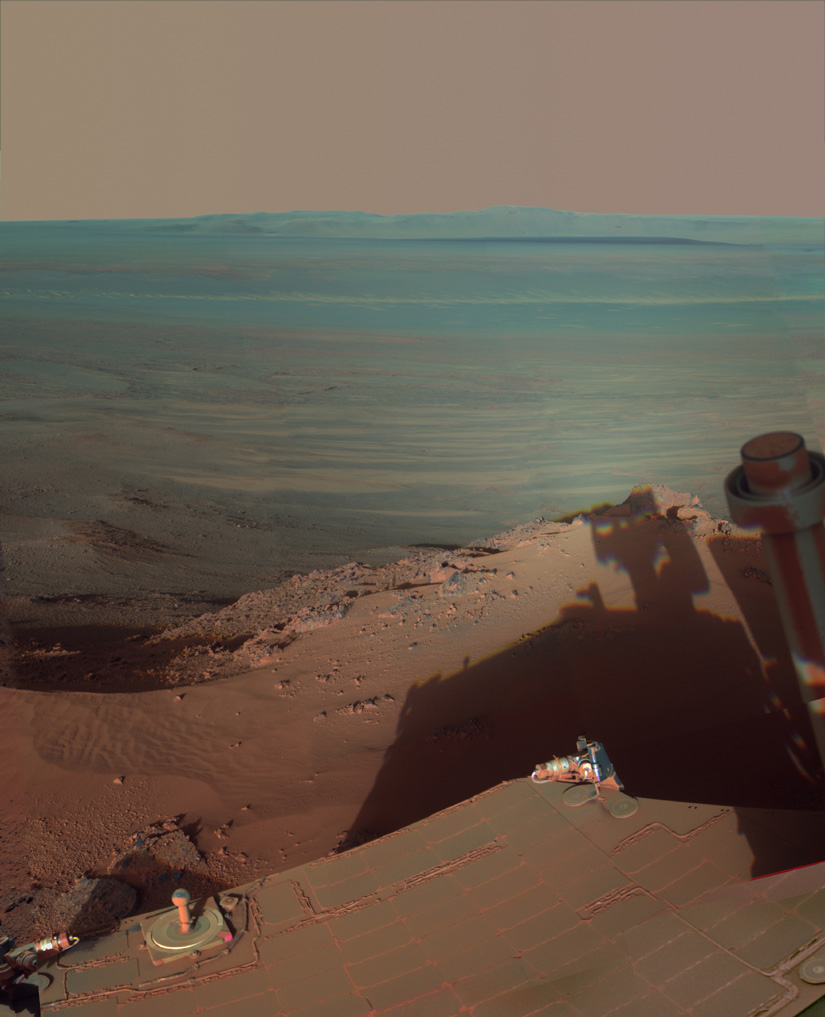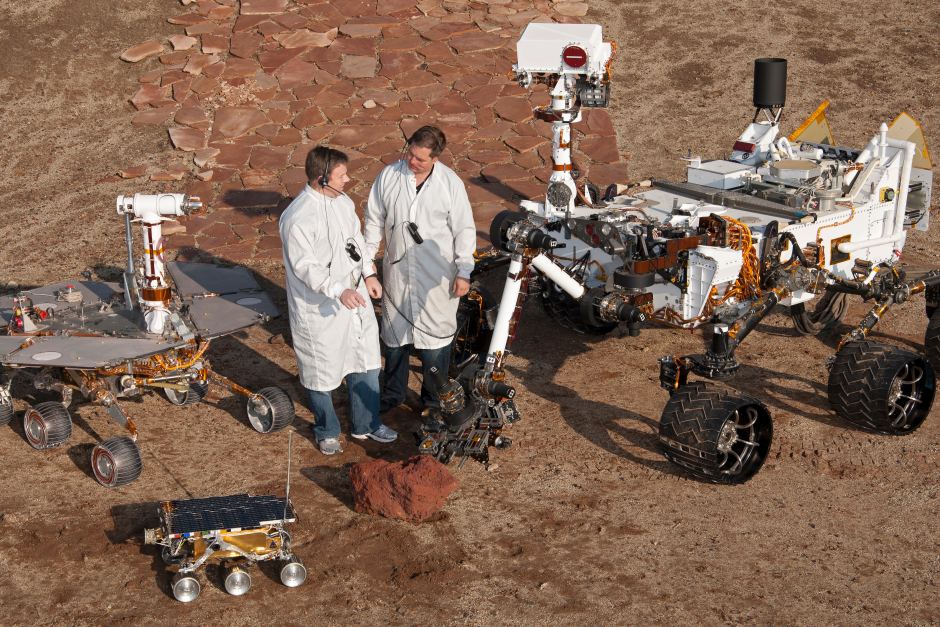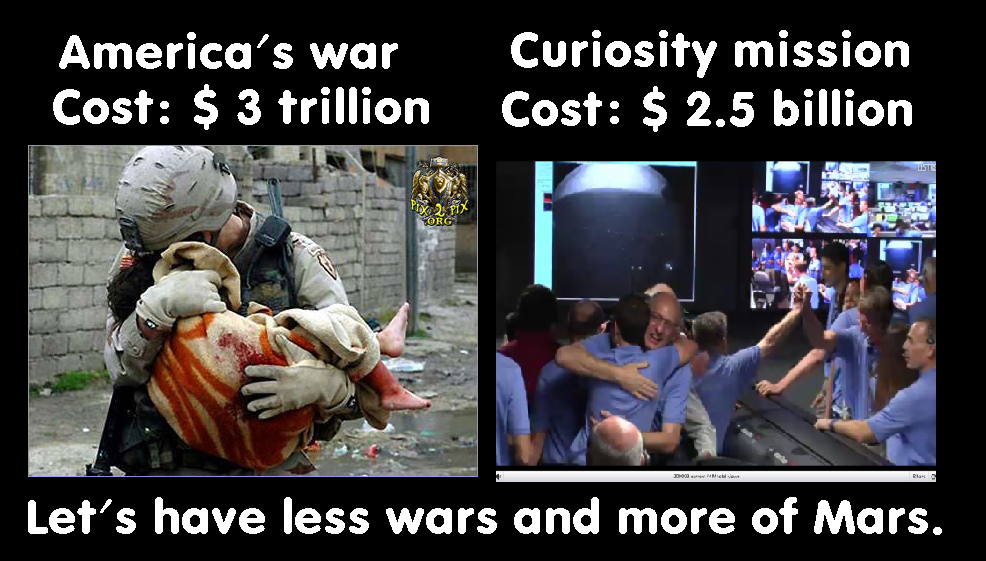Now that the hoopla over Curiosity’s landing has died down, let us stand back and examine what has been achieved to see if it was really worth all that hype.
Below is a picture of Mars as seen from Earth. That reddish dot in the sky is an alien world hurtling and spinning through the unimaginable vastness of space at astounding velocities, billions of kilometers away from Earth. The smartest members of our species have just sent a laboratory on wheels to that dot. But they did not just aim for that dot, they aimed for a tiny pixel within a pixel within that dot. And they hit the mark. Soon, that lab on wheels will rove its way around a very tiny portion of that little bright spot in the night sky. If that does not make the hairs on the back of your neck stand on their end, then I do not know what will.
![Mars from Earth [stars.astro.illinois.edu]](https://filipinofreethinkers.org/wp-content/uploads/2012/08/Mars-from-Earth-stars.astro_.illinois.edu_.jpg)

And now that we have placed things in perspective, I believe it’s time for Curiosity itself to tell us the rest of its story.
Curiosity Speaks
Hello, my name is Curiosity. I am the rover of NASA’s Mars Science Laboratory (MSL) program. I know I am animate only in the broadest sense and that my artificial intelligence is comparable to that of a fly, but allow me this conceit of having conscious thought, if only to tell the story of my mission in Mars. It is, after all, also the story of my cousins, Spirit and Opportunity. It is also the story of Mars. Ultimately, it is also the story of life on Earth. My story is your story, too.
When I landed safely on the surface of Mars on the 6th of August, 2012, my parents at the Jet Propulsion Laboratory (JPL) were ecstatic. Their ecstasy is understandable not only because they have high hopes for me, but also because my landing was daring. In fact, it was so risky I wouldn’t blame you if you think they were a bit nutty when they planned my entry, descent and landing. To provide a comparison, my cousins Spirit and Opportunity touched down on the surface of the red planet surrounded by giant airbags while I was dropped naked. (In this way, I am more human-like than my predecessors.) The slogan “Dare mighty things” was well chosen for my landing.
I may be beautiful and sophisticated, but I am also hardy. To appreciate this, imagine what I had to survive during my “7 minutes of terror”. Upon my entry to Mars’ thin atmosphere, I was travelling at a speed of 21,000 kilometers per hour. That’s more than 60 times the speed of sound. At that speed I would be able to circle the world in less than two hours. From such unimaginable velocity, I had to decelerate to zero in a mere 7 minutes. At one point during my descent, I survived a deceleration of 9g. Imagine stopping from 120 kph in less than half a second – basically the definition of a fatal car accident – that’s 9g.
![Curiosity's EDL [universetoday.com]](https://filipinofreethinkers.org/wp-content/uploads/2012/08/Curiositys-EDL-universetoday.com_.jpg)
While the whole world celebrates my safe landing, the challenges I am to face have only begun. Although it is my home from now on, Mars will also be my constant enemy. Unlike Edgar Rice Burroughs’s Barsoom, the real Mars is a world very different from Earth. With temperatures ranging from –15°C in the summer to –100°C in the winter, it forbidding even to most robots and extremophiles. But cold as it is on the Martian surface, the pressure here is so low that if you were to stand next to me without wearing a space suite, your blood will boil away into the sparse atmosphere. (That scene from Watchmen when Dr. Manhattan brought Silk Spectre to the surface of Mars is a reminder of how difficult it is for human intuition to understand the environment of another planet.) If any creature evolved to survive on Mars’s surface, it would find the pressure on the summit of Mt. Everest crushingly high.
The hypothetical Martian would also find the Earth’s oxygen-rich atmosphere exceedingly poisonous. For you earthbound animals who have evolved to handle oxygen so well, it is forgivable that you forget how potent an oxidizing agent it actually is. Here on the fourth planet, the oxygen is locked in the rusty soil and rock that gives the planet its characteristic color. Since Mars’ thin atmosphere is composed largely of carbon dioxide, it will not only suffocate any human foolish enough to breathe it in, it will suffocate even fire. No campfire or candle will burn on the surface of the my new home planet.
The Martian surface is also buffeted by nearly direct solar radiation. Mars does not have an ozone layer. It does not even have a magnetosphere, which means the fierce “solar wind” batters its atmosphere like crazy. And because Mars lacks a significant magnetic field, no auroras streak its pinkish sky. Using a magnetic compass for navigation is not an option here.

Finally, there are the notorious dust storms of Mars. Because of a combination of low pressure and low gravity, the dust particles on the Martian surface are eager to be airborne. My predecessors have warned me that such storms can rage for months on end. Luckily, my parents at NASA designed me so that I do not depend on the Sun for my energy. Instead of having solar panels like Spirit and Opportunity, I am, like Vikings 1 and 2, powered by the heat generated by a radioactive isotope I carry around with me.
And speaking of power, I need lots of it. After all, I am a not just an explorer, I am a science laboratory on wheels. I carry with me tools as simple as cameras and light microscopes to equipment as complex as a gas chromatograph coupled to a mass spectrometer. (I have at least 4 kinds of spectrometers. You cannot have too many spectrometers.) I use my equipment to analyze the composition of interesting rocks I happen to pass by. However, I do not limit myself to the rocks on the surface. I am armed with a laser gun that blasts off surface rocks, allowing me to analyze the chemistry of the underlying rocks. I am a mean machine. If intelligent Martians see me walking around their planet, they would think earthlings are waging war against them. It’s like War of the Worlds, only it’s the other way around.
My parents at NASA call me a robot scientist. In that case, I am a robot meteorologist, geologist, and chemist. Using my powerful instruments, more numerous and sophisticated than the ones aboard Spirit and Opportunity, my mission here is to study the climate of Mars, examine its rocks, and peer into its history. For these purposes my landing site, Gale Crater, was carefully and well chosen. Gale Crater houses kilometers upon kilometers of exposed rock layers. For a terrestrial analogy, think Grand Canyon. Because of its exposed rock strata, Gale Crater is like an open book into parts of Mars’ history. Studying the rock layers at Gale Crater might provide clues to the following questions: Why is Mars so different from Earth? Was there ever plate tectonics on Mars? And did water play an important role in Mars’ history?
I am also here to search for water. Such is a daunting task given how bone-dry Mars is. Compared to the red planet’s surface, the Sahara Desert is a lush, wet forest of life. Not even Frank Herbert’s Arrakis can match the dryness of the real Barsoom.
![Curiosity's instrument [nssphoenix.wordpress.com]](https://filipinofreethinkers.org/wp-content/uploads/2012/08/Curiositys-instrument-nssphoenix.wordpress.com_.jpg)
However, there are tantalizing clues that liquid water once flowed in abundance on the ancient Martian surface. Orbiting space probes have taken pictures of what appears to be dried river channels, deltas, and flood plains. Spirit and Opportunity even discovered mineral formations that probably formed in the presence of neutral water. Even more intriguing are the suggestions that there’s more water on Mars today than was initially thought. Much of this is heavily debated by earthbound scientists. The results of my investigations here on Mars may end these debates. It may also start new ones.
You can also call me a robot biologist, although what that means no one clearly knows. In fact, one of my missions is to clarify what it really means to study life. When Viking 1, Viking 2, Spirit, and Opportunity tried to search for life on Mars, their tests were riddled with false positives and inconclusive results. The world even witnessed bedazzled NASA scientists excitedly, and some would say carelessly, announcing signs of “alien life” at every opportunity. Their failures remind you humans how ignorant you are of this thing called life. Because NASA has learned from the failures of my predecessors, I am not going to search for life directly. Instead, I am going to look for conditions that you think are “suitable for life”. For life “as you know it”, at least.

The success of my landing proves that you humans can achieve mighty things if only you work together. Wars and bigotry are a waste of your energy, resources, and lives. By successfully doing what has been deemed be crazy, my example has the power to encourage a generation of dreamers.
By now I think you understand why I am here on this desolate wilderness called Mars. By studying this world, I can give you humans more insights into your own. By examining this seemingly dead planet, I can help you understand the fragile balance of your living globe. By probing a planet possibly devoid of life, I can help you know more about what it means to be alive.
As for those dreamers my success will inspire, know that I will be here patiently awaiting the coming of your descendants to the surface of the red planet.


